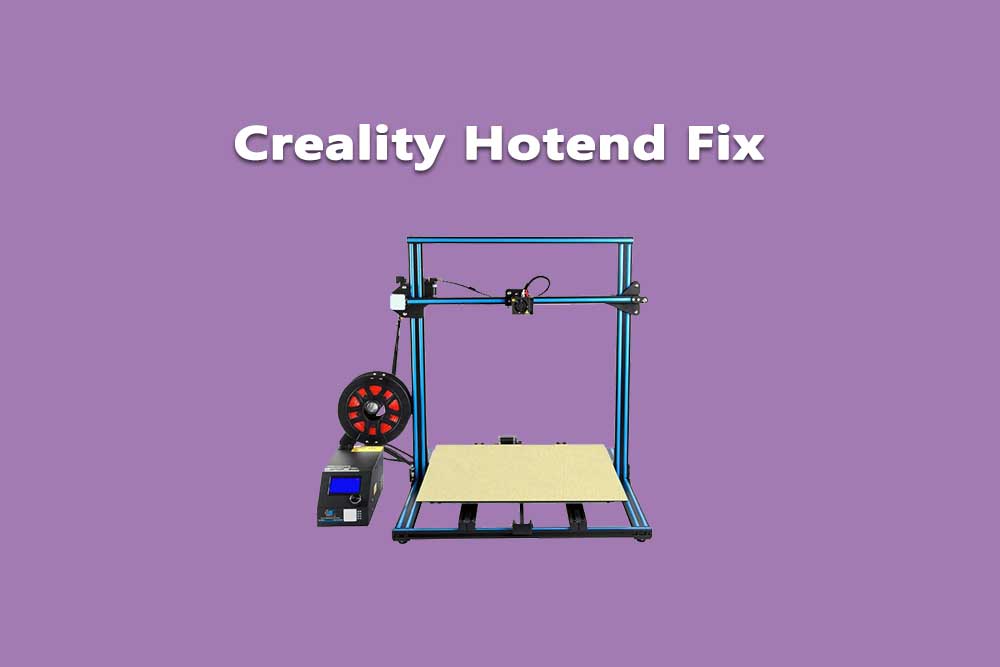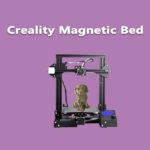What is hotend?
The hotend of a 3D printer is the assembly where the filament is melted and extruded through the nozzle.
Most hotends have several parts including the heating element, thermal break, nozzle, and cooling fan. The thermal break keeps the heat in the hotend while the cooling fan helps to prevent clogs by keeping the filament cool as it enters the hotend.
Types of hotend:
There are two main types of hotends, those with a PTFE liner and those without. The type of hotend you have will dictate how you go about fixing it.

If your hotend does not have a PTFE liner:
The first thing you will need to do is remove the heating element from the hotend. This can be done by unscrewing the setscrew that holds it in place.
Once the heating element is removed, you will need to clean out the inside of the hotend with a small brush or compressed air. Be sure to get rid of any debris that may be blocking the nozzle.
Once the hotend is clean, you can replace the heating element and screw it back into place. Be sure to use thermal paste or grease to help transfer heat better.
If your hotend has a PTFE liner:
The first thing you need to do is remove the PTFE liner from the hotend. This can be done by unscrewing the setscrew that holds it in place.
Once the PTFE liner is removed, you will need to clean out the inside of the hotend with a small brush or compressed air. Be sure to get rid of any debris that may be blocking the nozzle.
Once the hotend is clean, you can replace the PTFE liner and screw it back into place. Be sure to use thermal paste or grease to help transfer heat better.
How to fix a clogged hotend?
If your hotend is clogged, the first thing you need to do is remove the filament from the printer. Once the filament is removed, you can heat up the hotend to help melt any material that may be stuck in the nozzle.
If there is material stuck in the nozzle, you can use a needle or other sharp object to clear it out. Once the nozzle is clear, you can load new filament and resume printing.
If your hotend is not clogged?
If your hotend is not clogged but is not extruding properly, the first thing you should check is the tension on the filament. If the filament is too loose, it will not be able to extrude properly.
The next thing you should check is the nozzle. If the nozzle is dirty or blocked, it will need to be cleaned or replaced. Finally, if all else fails, you may need to replace the hotend entirely.
Which type of hotend is used in Creality?
PTFE-lined hotends are used in Creality printers. To fix a clogged or jammed hotend, follow the instructions for a PTFE-lined hotend above.
Next, heat up the hotend to help melt any material that may be stuck in the nozzle. If there is material stuck in the nozzle, use a needle or other sharp object to clear it out. Finally, load new filament and resume printing.
FAQ’s:
1. What is a hotend?
Ans: The hotend of a 3D printer is the assembly where the filament is melted and extruded through the nozzle.
2. What are the different types of hotends?
Ans: There are two main types of hotends, those with a PTFE liner and those without. The type of hotend you have will dictate how you go about fixing it.
3. How do I fix a clogged hotend?
Ans: First, remove the filament from the printer. Next, heat up the hotend to help melt any material that may be stuck in the nozzle. If there is material stuck in the nozzle, use a needle or other sharp object to clear it out. Finally, load new filament and resume printing.
4. My hotend is not clogged, but it is not extruding properly. What do I do?
Ans: First, check the tension on the filament. If the filament is too loose, it will not be able to extrude properly. Next, check the nozzle. If the nozzle is dirty or blocked, it will need to be cleaned or replaced. Finally, if all else fails, you may need to replace the hotend entirely.
5. What type of hotend does Creality use?
Ans: PTFE-lined hotends are used in Creality printers. To fix a clogged or jammed hotend, follow the instructions for a PTFE-lined hotend above.
6. I followed the instructions for fixing a clogged hotend, but my printer still isn’t working properly. What do I do?
Ans: If your Creality hotend is clogged or jammed, follow the instructions for a PTFE-lined hotend above. First, remove the filament from the printer.
Next, heat up the hotend to help melt any material that may be stuck in the nozzle. If there is material stuck in the nozzle, use a needle or other sharp object to clear it out. Finally, load new filament and resume printing.
7. My nozzle is blocked and I can’t seem to get it unclogged. What should I do?
Ans: First, try heating up the nozzle to melt any material that may be stuck in it. If that doesn’t work, you can try using a needle or other sharp object to clear the blockage. If that still doesn’t work, you may need to replace the nozzle entirely.
8. I think there is something wrong with my hotend. How can I tell for sure?
Ans: There are a few signs that something may be wrong with your hotend. If your printer is not extruding properly, if the filament is not being fed through correctly, or if the nozzle is becoming clogged frequently, these could all be indicative of a problem with the hotend.
9. Can I fix a problem with my hotend myself?
Ans: In some cases, yes. If the problem is something like a clogged nozzle, you may be able to clear it out yourself. However, if the problem is more serious, such as a damaged hotend, it is best to seek the help of a professional.
10. I think I need a new hotend. How do I choose the right one?
Ans: When choosing a new hot end, it is important to consider the type of printer you have and the materials you will be printing with.
You will also want to make sure that the hotend is compatible with your printer’s software and firmware. Once you have considered all of these factors, you can choose the hotend that best suits your needs.

